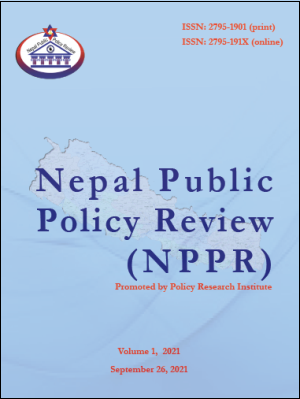Impact of Remittances on Economic Growth in Nepal
Keywords:
Economic growth, remittances, human capital, export, money supply, governanceAbstract
Remittances have become a significant source of foreign exchange as well as funds for small business start-ups and expansion and consumption spending of recipient households in developing countries. Accordingly, it is expected that remittances would contribute to economic development. Notwithstanding, there is yet no consensus on the impact of remittances on economic growth. This paper focuses on the impact of remittances on economic growth in Nepal, a small Asian country where remittances were 31% of GDP in 2016. Using data from the World Bank and other sources, the study found that remittances does not significantly impact economic growth. The study also found that democratic form of governance as measured by a dummy variable had a significant and positive impact on economic growth alongside capital formation and exports. Based on additional tests using cointegration and regression analysis, the paper found that there is a possibility that remittances negatively impact economic growth in the long run.
Downloads
Downloads
Published
How to Cite
Issue
Section
License
Copyright (c) 2021 Prasiddha Shakya, George P. Gonpu

This work is licensed under a Creative Commons Attribution-NonCommercial 4.0 International License.




